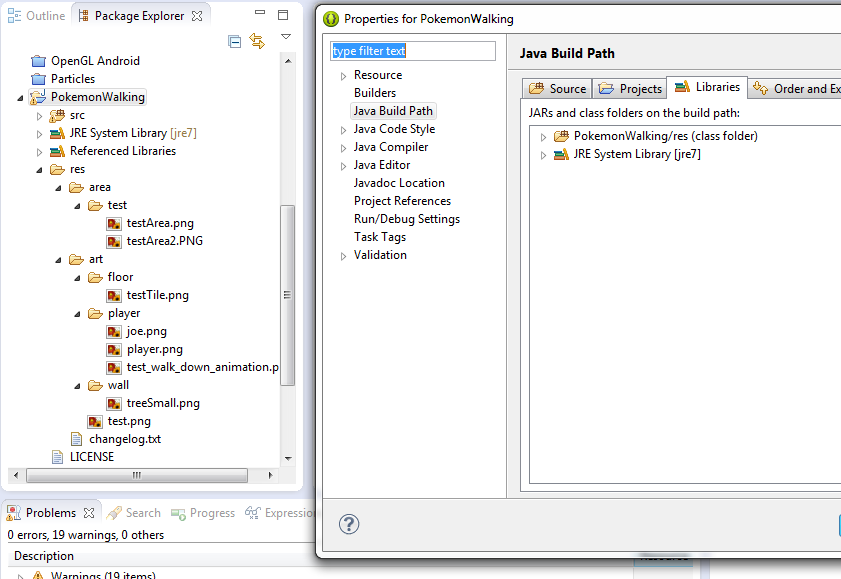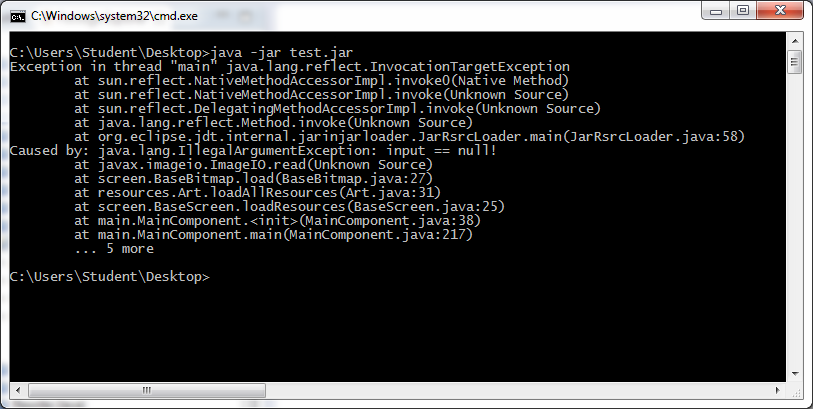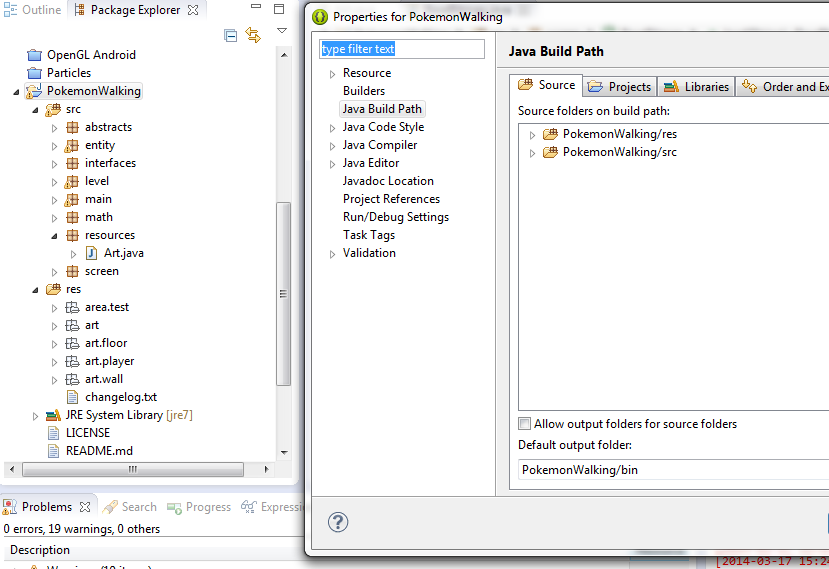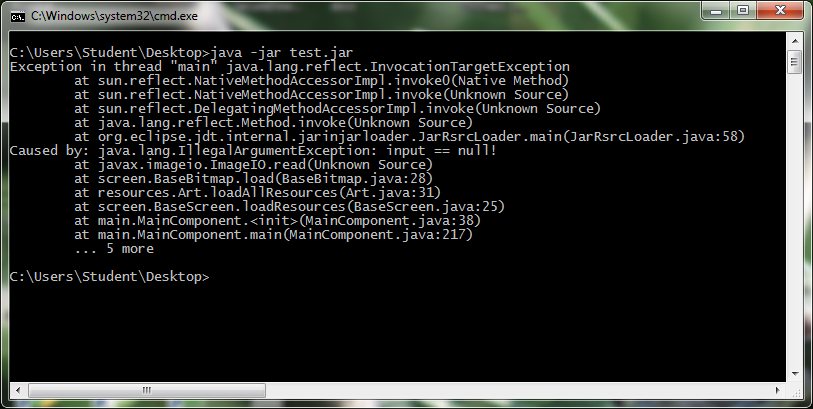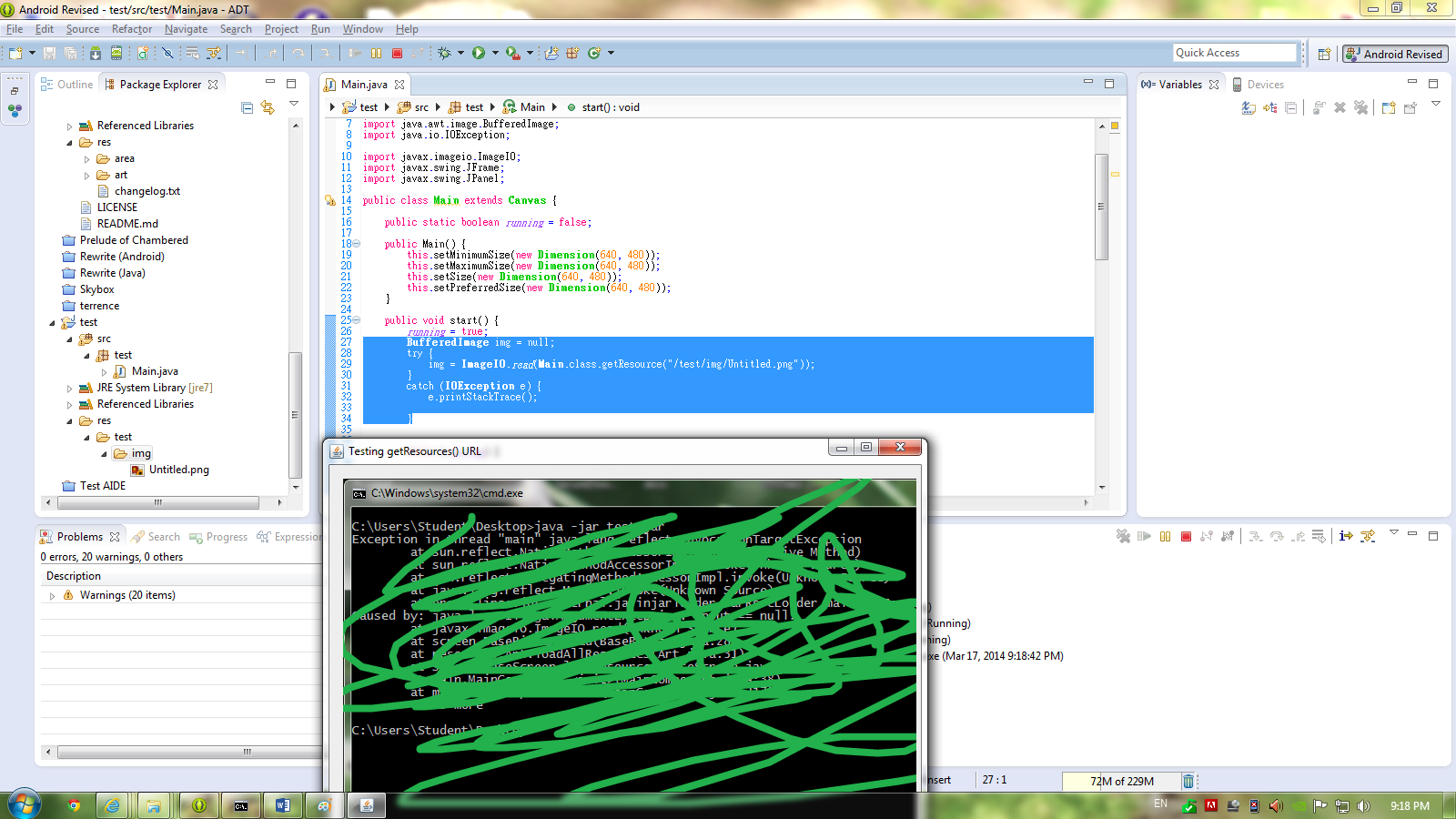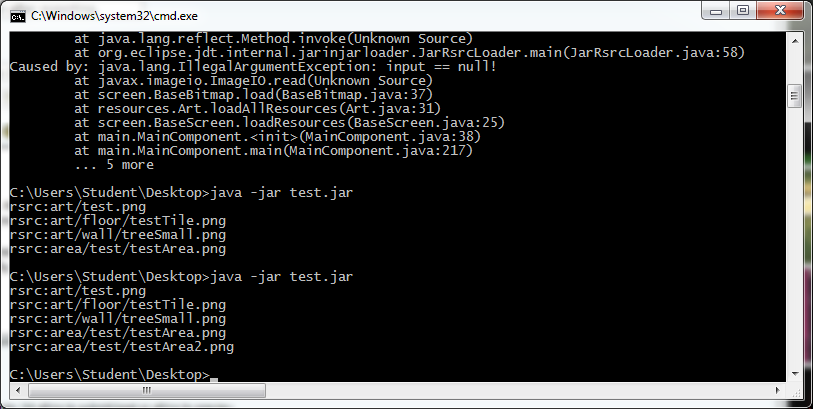For those who wanted to help out, here’s a link to my GitHub repository, so that anyone can help look at the problem.
GitHub repository: http://github.com/tommai78101/PokemonWalking.git
I’m having trouble with exporting a runnable JAR file recently. The problem seems to be an issue with class paths, but I’ve checked to see there’s no issues with it.
I’m actually stumped by this problem. I’m going to post a few pictures in hope that someone else may point out the problem that I didn’t see.
Picture of class path settings:
Picture of the output error log via console:
Loading resources code:
public class Art {
//Entities
public static BaseBitmap[][] player;
public static BaseBitmap[][] testDownAnimation;
//Tiles
public static BaseBitmap testTile;
public static BaseBitmap smallTree;
//Area
public static BaseBitmap testArea;
public static BaseBitmap testArea2;
//Others
public static BaseBitmap sprite;
public static void loadAllResources(BaseScreen screen) {
sprite = screen.load("/art/test.png");
player = screen.cut("/art/player/player.png", 16, 16, 0, 0);
testTile = screen.load("/art/floor/testTile.png");
smallTree = screen.load("/art/wall/treeSmall.png");
testDownAnimation = screen.cut("/art/player/test_walk_down_animation.png", 16, 16, 0, 0);
testArea = screen.load("/area/test/testArea.png");
testArea2 = screen.load("/area/test/testArea2.png");
}
}
Any answers/suggestions are fully welcomed. 

